The Walt Disney Company is one of the most powerful and diversified entertainment empires in the world. It has shaped modern storytelling, theme parks, media, and culture for over a century.
Founded in 1923 by Walt and Roy O. Disney, the company has grown into a powerful business with multiple divisions, spanning film, streaming, television, theme parks, and consumer products.
Its massive portfolio includes iconic brands like Marvel Studios, 20th Century Studios, Pixar, Disney+, ESPN, and Hulu, making it one of the most integrated entertainment ecosystems in corporate history.
Disney’s theme parks collectively draw over 140 million visitors annually. Its film studios have produced some of the highest-grossing movies in cinematic history, including Avengers: Endgame, The Lion King (2019), and Frozen II. Collectively, Disney films have earned more than $100 billion in lifetime box office earnings.
Meanwhile, Disney+ has emerged as a major streaming platform with over 127 million subscribers. In FY 2025, Disney generated $94.5 billion in revenue, a 5% increase YoY. Its net income reached $11.5 billion, marking an impressive 141.8% jump from the previous year. [1][2]
However, Disney’s dominance has invited fierce competition across multiple fronts — from entertainment conglomerates to streaming innovators and theme park developers.
This article examines the top Disney competitors in detail, analyzing how each company challenges Disney’s dominance through innovation, content strategy, global expansion, and audience engagement.
Did you know?
Walt Disney World in Florida spans more than 25,000 acres, roughly the size of San Francisco. In 2023, the Magic Kingdom alone drew 17.7 million visitors, retaining its title as the world’s most visited theme park. [3]
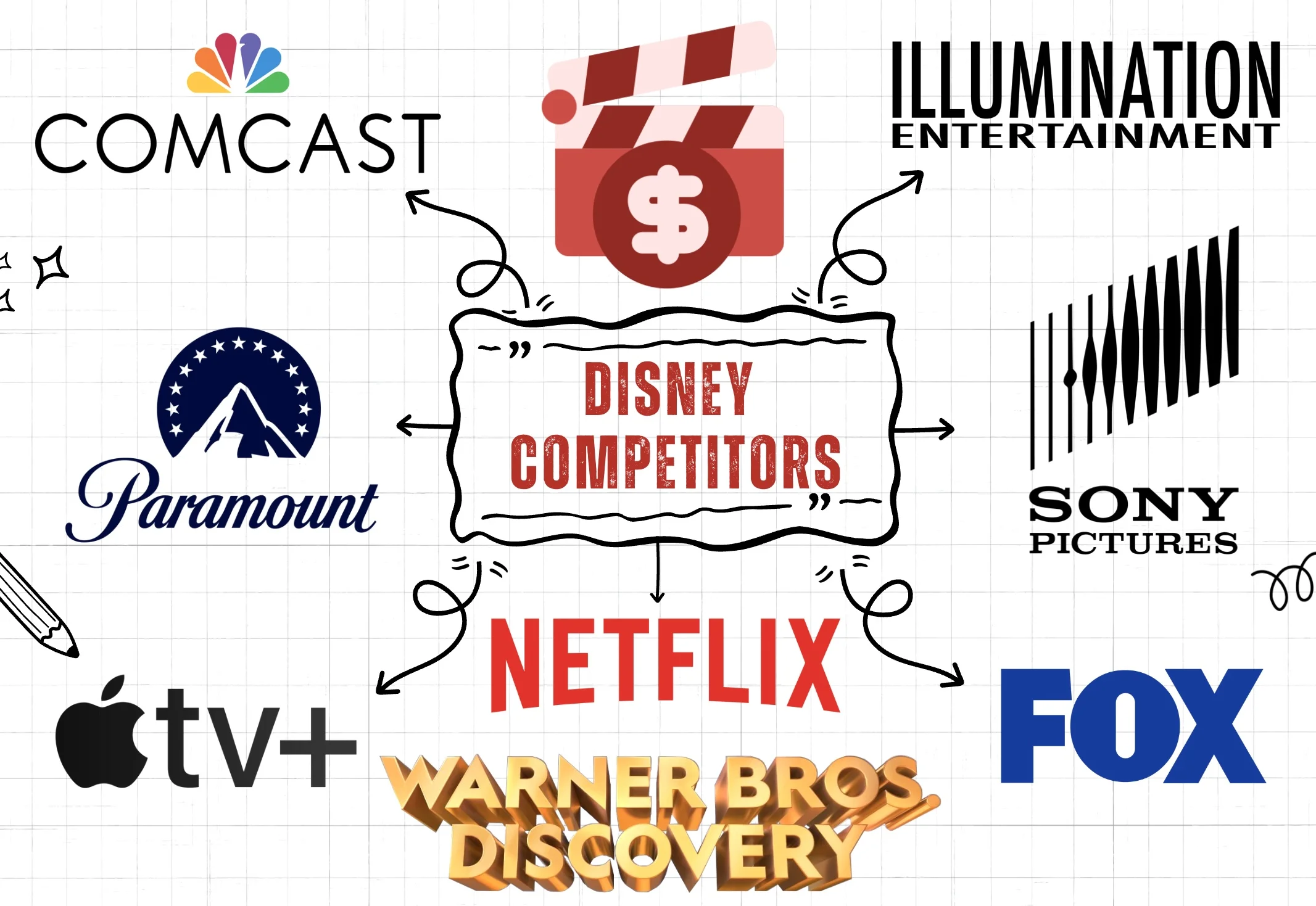
Table of Contents
13. Merlin Entertainments
Launched: 1998Headquarters: London, England
Revenue: $2 billion+
Core Rivalry: Competes in theme parks and family attractions with Disney Parks
Competitive Edge: Operates 140+ attractions
Merlin Entertainments Limited is one of the world’s largest and most diverse operators of theme parks and leisure attractions. Its portfolio includes well-known family-friendly brands such as Legoland, Madame Tussauds, Thorpe Park, The Dungeons, Sea Life, Alton Towers Resort, and Chessington World of Adventures.
The company differentiates itself through cost discipline and operational flexibility. Its smaller, modular attractions are cheaper to build and maintain compared to Disney’s large-scale resorts, yet they collectively attract tens of millions of guests annually.
Plus, its strategic collaborations with leading entertainment studios (like DreamWorks, Sony, and Hasbro) provide constant content renewal without the cost of developing proprietary IP.
In 2024, Merlin delivered a record performance: it welcomed 62.8 million guests, up 1.1% from the previous year, across its portfolio of over 140 attractions in 23 countries. [4]
12. Tencent Pictures & Video
Headquarters: Shanghai, ChinaParent: Tencent Holdings Ltd
Core Rivalry: Streaming, Film production in Asia-Pacific
Competitive Edge: Massive domestic market power
Tencent Pictures and Tencent Video are the film and digital entertainment arms of Tencent Holdings, one of China’s most powerful technology and media conglomerates. They cover film production, streaming services, IP licensing, gaming integration, and online video content.
Tencent Pictures, founded in 2015, focuses on film production, financing, distribution, and co-productions in both China and international markets. Despite being a relatively young studio, it has quickly become one of Asia’s most influential production companies, collaborating on major Hollywood films like Wonder Woman (2017), Kong: Skull Island (2017), and Terminator: Dark Fate (2019).
Tencent Video, launched in 2011, is one of China’s largest streaming platforms, competing directly with iQIYI and Youku. It has around 120 million paying subscribers and over 470 million monthly active users.
Together, Tencent Pictures and Tencent Video form a vertically integrated entertainment ecosystem, connecting content creation, distribution, and consumer engagement.
11. DreamWorks Animation
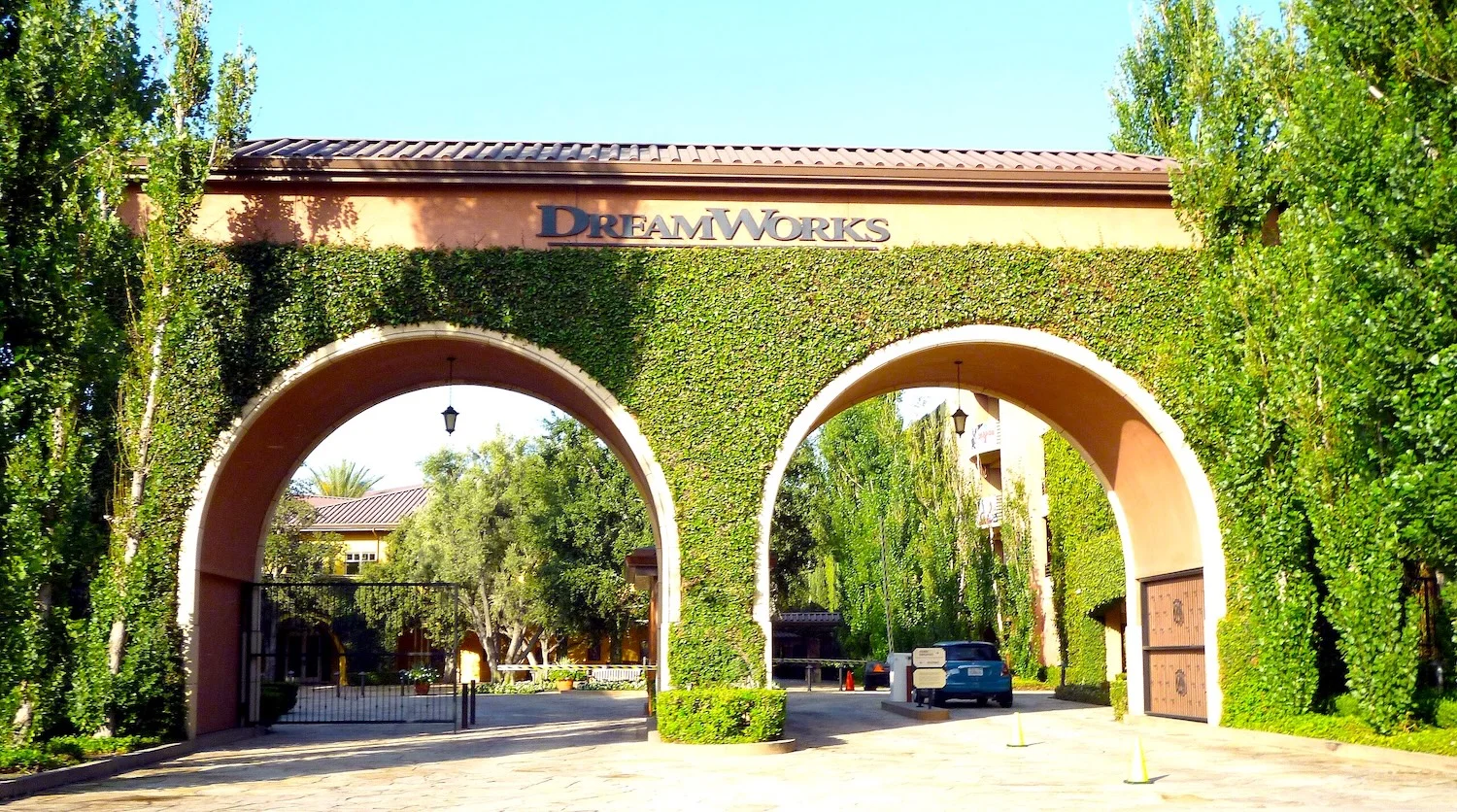 Headquarters of Dreamworks Animation in Glendale, California
Headquarters of Dreamworks Animation in Glendale, California
Headquarters: California, USA
Parent: Universal Pictures
Core Rivalry: Competes with Disney Animation and Pixar
Competitive Edge: Strong Franchise Portfolio
DreamWorks Animation is known for reshaping the modern animated film industry with its distinctive storytelling style, humor, and visual creativity .
The company rose to prominence in the early 2000s by challenging Pixar and Disney’s dominance with hits like Shrek (2001), Madagascar (2005), Kung Fu Panda (2008), and How to Train Your Dragon (2010).
Its animation style differs from Disney’s classic fairy-tale formula, often blending humor, pop culture references, and character-driven storytelling that appeals to both children and adults.
The studio has released more than 52 feature films, which have collectively generated over $18.5 billion at the global box office.
DreamWorks Animation is a subsidiary of Universal Pictures, which is part of Comcast’s NBCUniversal. Under Comcast’s ownership, the studio has expanded beyond films into streaming content, TV animation, theme park attractions, and partnerships with international studios.
In recent years, the company has shifted toward hybrid production, combining theatrical releases with streaming projects for platforms such as Peacock, Netflix, and Hulu.
DreamWorks has also expressed concerns about the use of AI in creative industries. For instance, the end credits of The Bad Guys 2 include a clear warning that the film cannot be used for AI training or data mining without permission. [5]
10. Illumination Entertainment
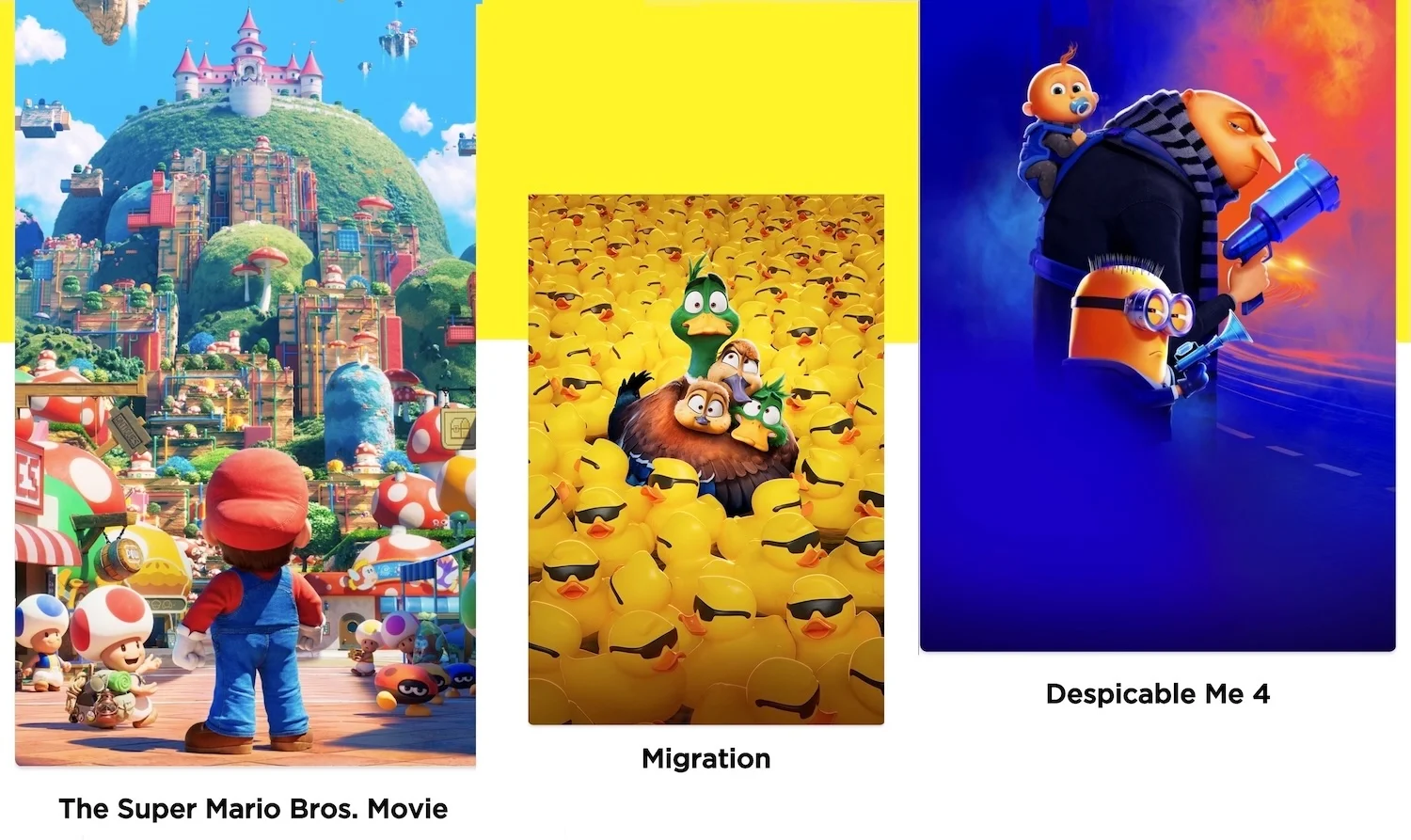
Headquarters: California, USA
Parent: Universal Pictures
Core Rivalry: Direct competitor to Disney and Pixar in animation
Competitive Edge: Cost efficiency; Strong IP/Character creation
Illumination Entertainment is a subsidiary of Universal Pictures, which itself is owned by Comcast’s NBCUniversal.
Although younger than giants like Disney and Pixar, Illumination has quickly become a major player in the global animation industry, with films that have collectively grossed over $10.7 billion worldwide.
Its rise started with the 2010 release of Despicable Me, which introduced the iconic Minions — a major cultural and merchandising hit. Other popular Illumination films include The Secret Life of Pets, Sing, and The Super Mario Bros. Movie.
These films have earned billions worldwide. For instance, The Super Mario Bros. Movie (2023) grossed around $1.362 billion globally, making it the studio’s highest-grossing release. [6]
The company’s operational model is built around cost efficiency, high profitability, and mass appeal. Unlike many studios that spend enormous sums on animation production, Illumination maintains lean budgets averaging between $75-$100 million per film, compared to Pixar or Disney’s typical $150-$200 million budgets.
9. Lionsgate Entertainment
Launched: 1997Headquarters: California, USA
Revenue: $3.19 billion+
Core Rivalry: Competes in film production and streaming (Starz)
Competitive Edge: Mid-budget/Genre niche strength
Lionsgate has grown from a small Canadian startup into a global entertainment company with a diverse portfolio spanning film production, television programming, streaming platforms, and content licensing.
The company manages a rich library of over 20,000 titles, including award-winning and commercially successful franchises like The Hunger Games, John Wick, and Twilight. Its television division has emerged as a strong performer, producing acclaimed series such as Mad Men, Orange Is the New Black, Power, and The Serpent Queen.
Lionsgate also runs Starz, a premium streaming and cable network available in 60+ countries. In 2025, the company spun off its Starz business to provide clearer financial visibility, allow independent valuation, and enable each business to focus more sharply on its goals. [7]
Unlike larger rivals that focus mainly on their own streaming services, Lionsgate stays flexible by distributing its content across multiple platforms, such as Netflix, Amazon Prime Video, and Apple TV+.
8. Apple TV+
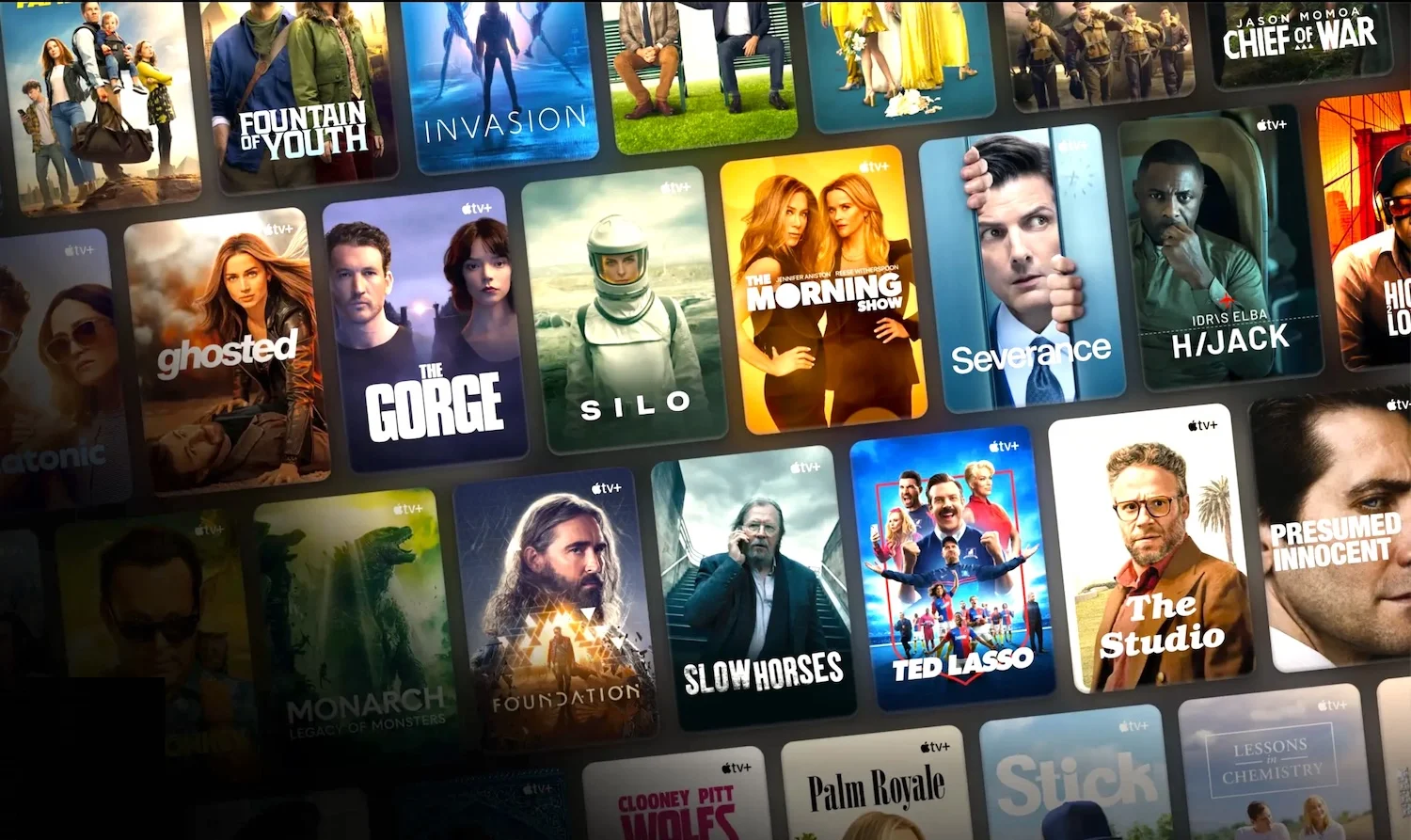
Headquarters: California, USA
Subscribers: 40 million+
Core Rivalry: Competes in streaming and original content
Competitive Edge: Ecosystem integration, Quality over quantity
Despite being one of the youngest major streaming services, Apple TV+ has carved out a distinct identity centered on premium, high-quality, and creatively curated original content.
Unlike other platforms that prioritize massive content libraries, Apple TV+ focuses on quality over quantity, investing heavily in cinematic storytelling, star-driven projects, and exclusive series.
Apple has reportedly invested more than $25 billion in content development since launching Apple TV+, reflecting its long-term strategy to compete with major entertainment giants. Its original shows, like Ted Lasso, The Morning Show, Severance, For All Mankind, Silo, and Foundation, have received widespread critical acclaim and significant industry recognition. [8]
Apple’s biggest advantage is its vast device ecosystem. With billions of active Apple devices worldwide, Apple TV+ gains instant access to users without the heavy marketing and customer acquisition costs that competitors like Disney+ and Netflix face.
7. Prime Video (Amazon)
Launched: 2006Headquarters: New York, USA
Subscribers: 200 million+
Core Rivalry: Competes in streaming and media production
Competitive Edge: Amazon’s ecosystem integration
Amazon’s Prime Video is part of a horizontal ecosystem, where streaming is one of many services designed to keep users engaged across e-commerce, devices, and digital services.
It has produced and distributed critically acclaimed content, including The Boys, The Marvelous Mrs. Maisel, Reacher, Jack Ryan, The Lord of the Rings: The Rings of Power, and Invincible.
These high-budget productions (often costing $10-20 million per episode) highlight Amazon’s strong commitment to long-term content investment. Notably, The Rings of Power became one of the most expensive television series ever made, with a production budget of $465 million for its first season. [9]
Recently, Amazon has been refining its Prime Video strategy by adding ad-supported tiers in several markets, investing more in live sports rights, and expanding its advertising revenue streams.
Prime Video now holds exclusive rights to major events like the NFL’s Thursday Night Football, the English Premier League (UK), and the UEFA Champions League (Germany and Italy), competing directly with major broadcasters like ESPN (Disney) and Sky Sports.
6. Sony Pictures Entertainment
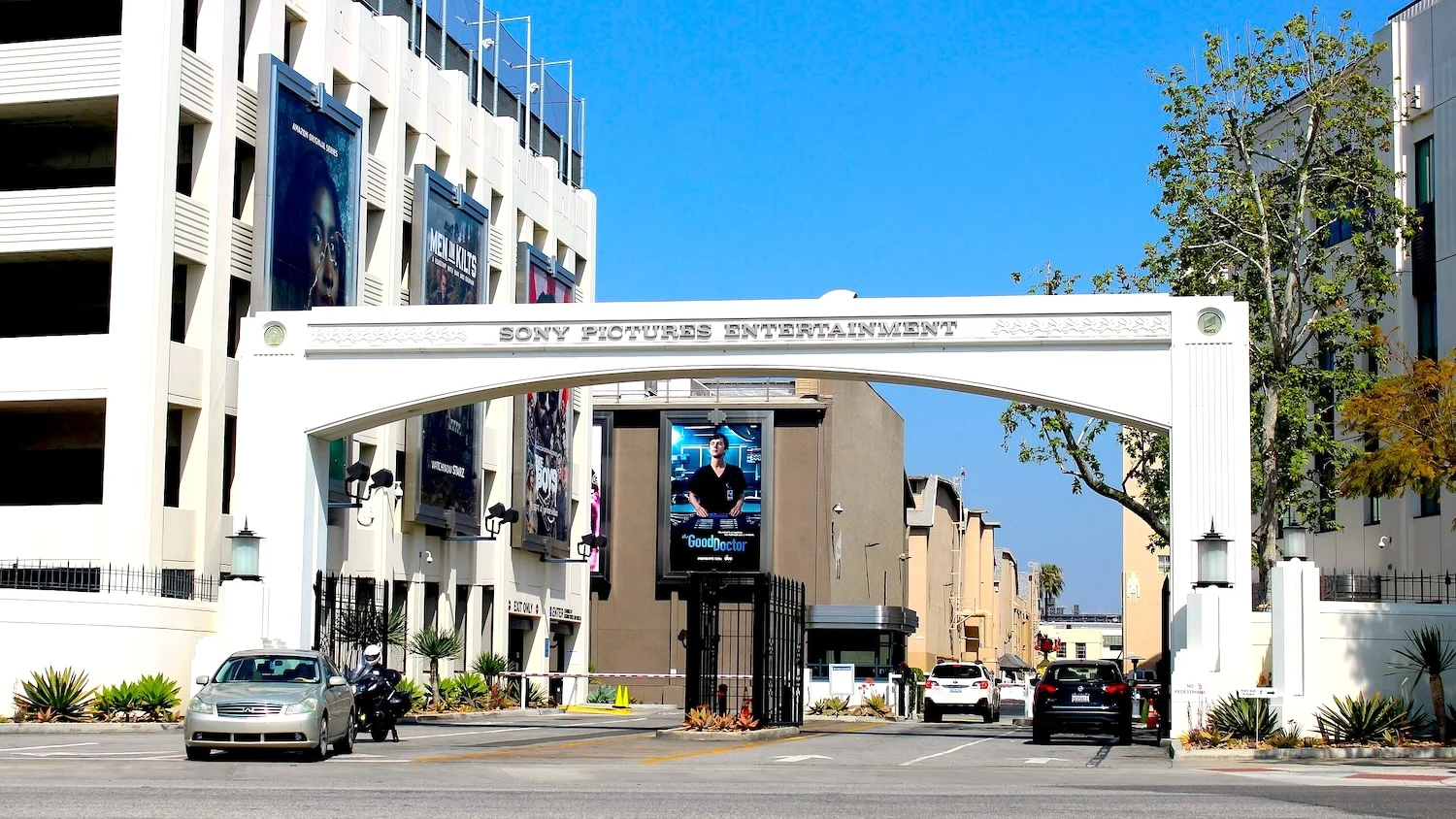 Sony Pictures Studios in Culver City, California
Sony Pictures Studios in Culver City, California
Headquarters: California, USA
Revenue: $10 billion+
Core Rivalry: Marvel Studios vs Sony’s Spider-Man universe
Competitive Edge: Licensing strategy, Global presence, and Local adaptation
Sony Pictures Entertainment (SPE) is the motion picture, television production, and distribution arm of Sony Group Corporation.
The company’s legacy dates back to 1989, when Sony acquired Columbia Pictures Entertainment for $3.4 billion. It was a transformative deal that marked Sony’s entry into Hollywood and its commitment to merging technology with entertainment. [10]
Through its film studios, SPE owns and manages several well-known franchises, including Spider-Man, Jumanji, and Men in Black. The studio has a long production history and offers a diverse range of film genres.
Unlike some studios that have leaned heavily into owning their own streaming platforms, SPE has historically focused more on content production, licensing, theatrical releases, and letting third-party platforms or distributors carry its content.
By licensing its content to third-party streaming platforms, SPE avoids the high costs and risks of running its own global streaming service. This approach enables the company to generate revenue from established platforms, albeit at the expense of some control over distribution.
Plus, SPE has exposure to both mature Western markets and high-growth regions. For example, in India, Sony Pictures Networks India operates numerous linear TV channels, as well as a streaming service (SonyLIV).
5. Fox Corporation

Headquarters: New York, USA
Revenue: $16.3 billion+
Core Rivalry: TV networks, licensing, streaming (Tubi)
Competitive Edge: Live content (news, sport, political coverage)
Fox Corporation is a US media & entertainment company with a strong focus on live news, sports, broadcast television, and ad-supported streaming. It is the successor to the parts of 21st Century Fox that were not sold to Disney in 2019.
Today, the company commands a massive audience reach through its flagship brands: Fox News Media, Fox Sports, Fox Television Stations, and the Fox Broadcasting Company.
Fox News is one of America’s highest-rated cable news channels, while Fox Sports secures major broadcasting rights for the NFL, FIFA World Cup, MLB, and NASCAR, ensuring consistent viewership and advertising strength.
This type of content is harder to replicate, has high viewer engagement, and fetches high advertising rates. Because of its live & news/sports content, Fox can charge premium ad rates. Also, political ad cycles can give spikes in ad revenue.
Fox has also launched Tubi, its free ad-supported streaming platform, which now attracts over 100 million monthly active users. In FY 2025, the company reported a net income of $2.24 billion, a 50.77% increase year-over-year.[11][12]
4. Paramount Global
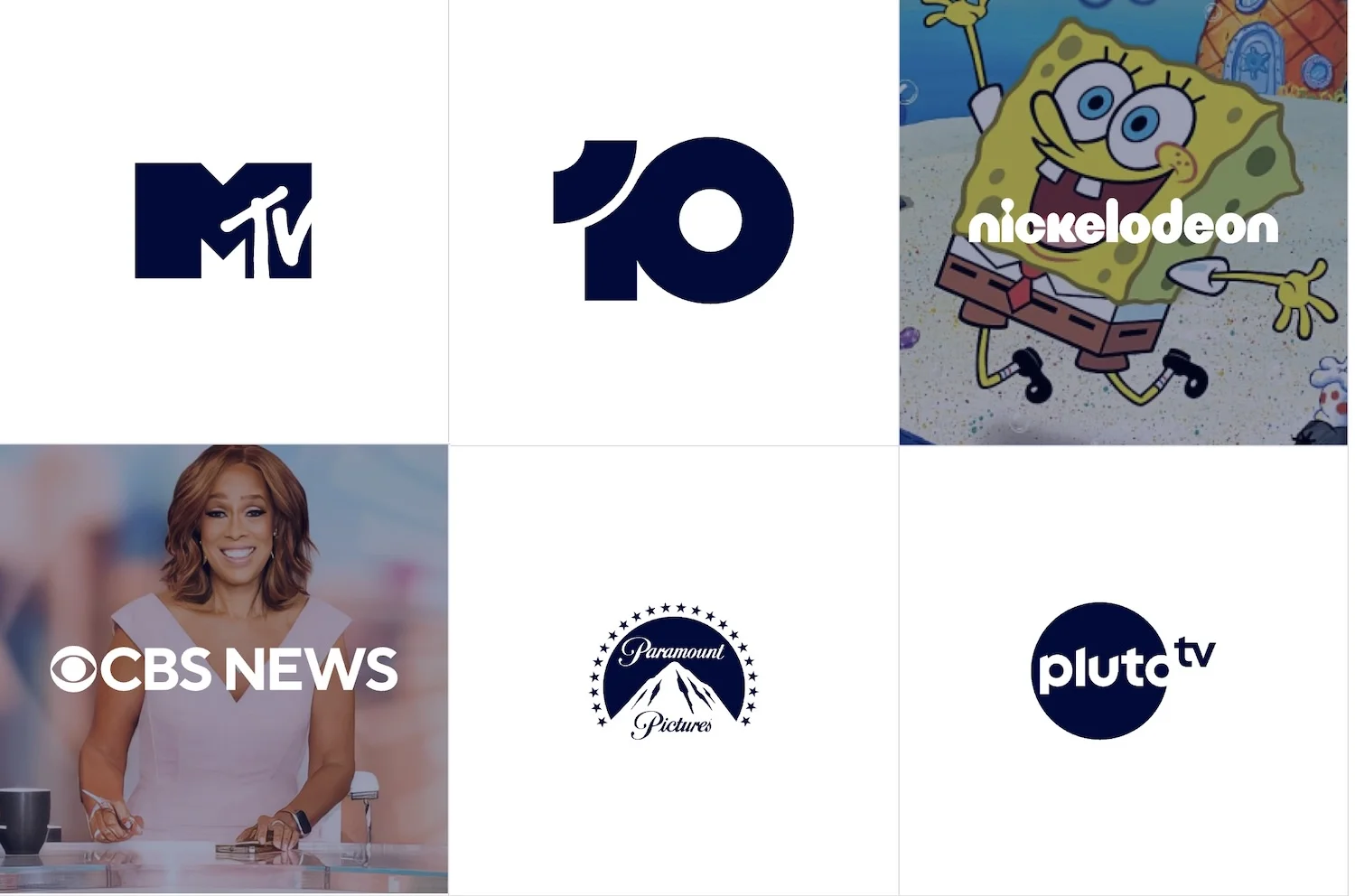
Headquarters: New York, USA
Revenue: $28.7 billion+
Core Rivalry: Film, television, and streaming (Paramount+)
Competitive Edge: Multi-platform reach, Diverse audience base
Paramount Global’s legacy spans over a century. It owns and manages some of the most recognizable entertainment brands in the world, including Paramount Pictures, CBS, Nickelodeon, MTV, BET, Comedy Central, and Showtime, along with its flagship streaming service, Paramount+.
Paramount Pictures, one of Hollywood’s oldest film studios, remains a key part of the company’s success, having produced major hits like Top Gun: Maverick, Mission: Impossible – Dead Reckoning, and Transformers: Rise of the Beasts. Meanwhile, CBS continues to be one of the most popular TV networks in the US, with long-running franchises like NCIS and Survivor dominating prime-time television.
In recent years, the company has been working to shift its focus to direct-to-consumer streaming (Paramount+) and Pluto TV, improving monetization via subscriptions and advertising, and making cost reductions.
Paramount+ has surpassed 77 million global subscribers, while Pluto TV, one of the world’s largest free ad-supported streaming television (FAST) platforms, attracts over 80 million monthly active users.
In 2025, Paramount Global merged with Skydance Media in an $8.4 billion deal, creating the Paramount Skydance Corporation. The merger aimed to strengthen content production, expand technology and studio capabilities, and reshape the company’s strategy for both streaming and film divisions. [13]
3. Comcast
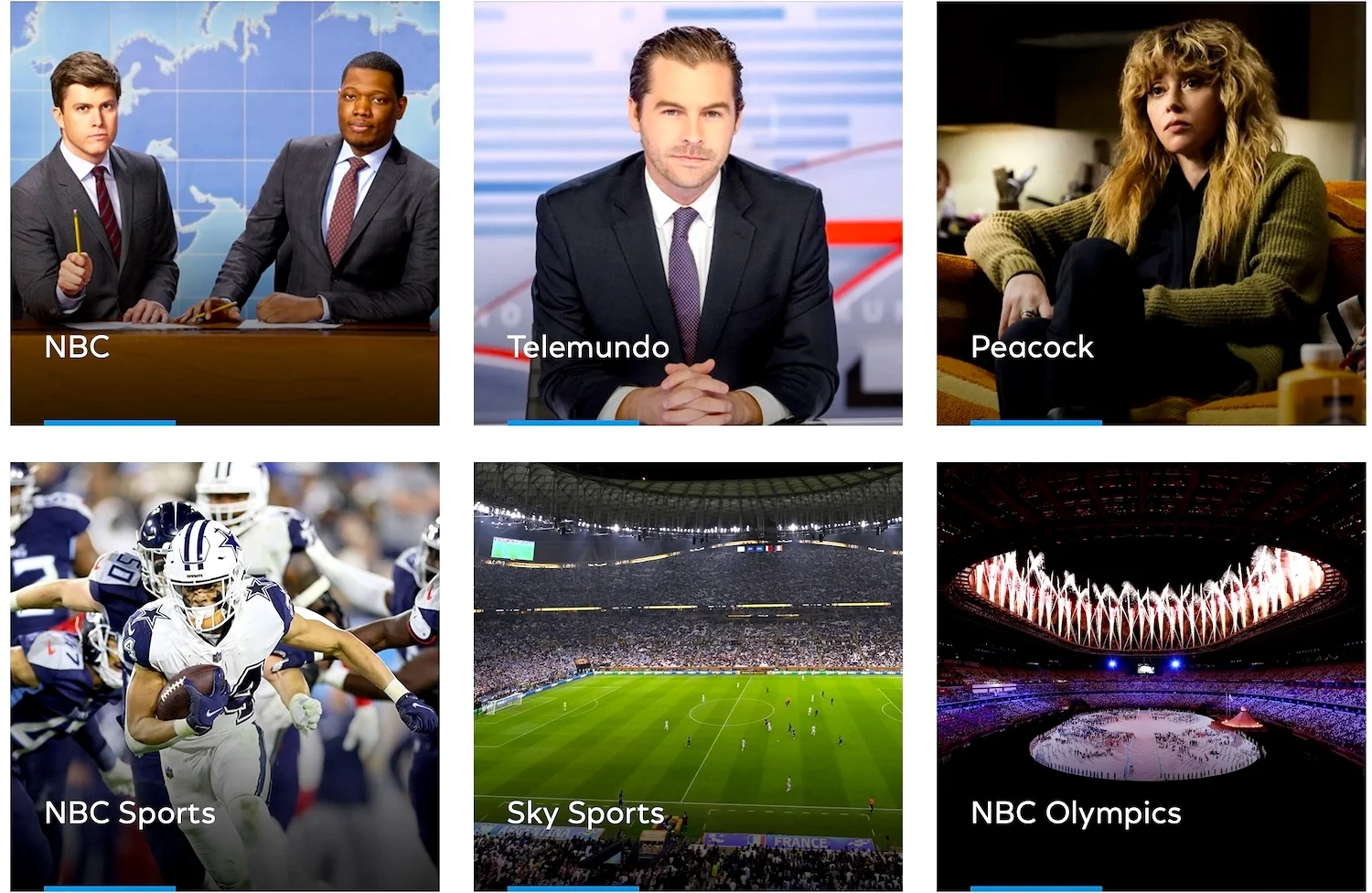
Headquarters: Pennsylvania, USA
Revenue: $124.1 billion
Core Rivalry: Media networks, Streaming (Peacock), Theme parks
Competitive Edge: Vertical integration (owning both distribution and content)
Comcast has a diverse business portfolio that spans broadband, cable, content creation, and streaming. Its core divisions include Comcast Cable (Xfinity), NBCUniversal, and Sky Group.
NBCUniversal owns and operates some of the most recognized entertainment brands globally, including NBC, Universal Pictures, DreamWorks Animation, Telemundo, and Peacock. Its film and television units are responsible for some of the biggest box-office hits and acclaimed shows, such as Jurassic World, Fast & Furious, Minions, The Office, and Saturday Night Live.
Their streaming platform, Peacock (launched in 2020), has already surpassed 41 million paid subscribers, helping Comcast compete directly in the digital entertainment market against giants like Disney+ and Netflix.
Plus, the company’s theme parks, particularly Universal Studios in Orlando, Hollywood, and Japan, are major profit centers that enhance brand recognition and provide experiential extensions to its franchises.
Financially, Comcast is a robust entity with strong cash flow and diversified earnings. In FY 2025, the company reported over $46.5 billion in gross profit, with net income exceeding $22.9 billion. [14]
2. Netflix
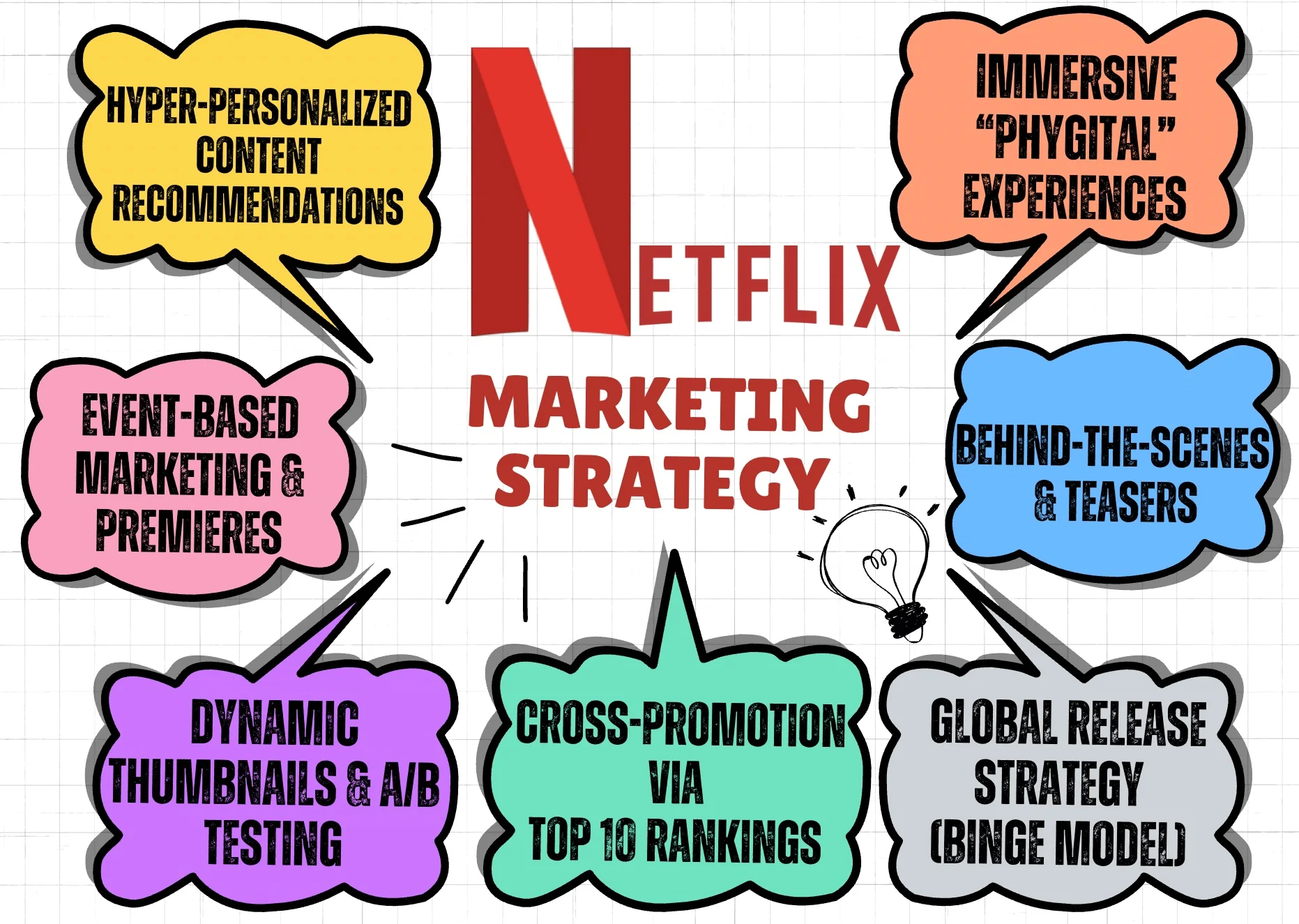
Headquarters: California, USA
Revenue: $41.69 billion
Core Rivalry: Disney+ in streaming
Competitive Edge: Strong original content hits; Technology & UX
Netflix has become a pioneer in original content, global expansion, and transforming the way people consume media. Its strategy has shifted in recent years to emphasize not just subscriber growth, but also revenue per user, better ad-supported tiers, and increasing live/sports content.
One of Netflix’s biggest strengths lies in its data-driven decision-making. Using detailed viewer analytics and AI, the company fine-tunes content recommendations, determines what genres to expand, and optimizes global production budgets.
Its original content (such as Stranger Things, The Crown, Bridgerton, and Wednesday) has consistently drawn massive audiences and earned prestigious awards, including multiple Emmys and Oscars. The company invests nearly $18 billion annually in content creation. [15]
Financially, Netflix is one of the most profitable media companies in the world, with over 300 million paid subscribers in 190+ countries. In FY 2025, it reported a net income of $10.24 billion, marking a 44.4% year-over-year increase.
1. Warner Bros. Discovery
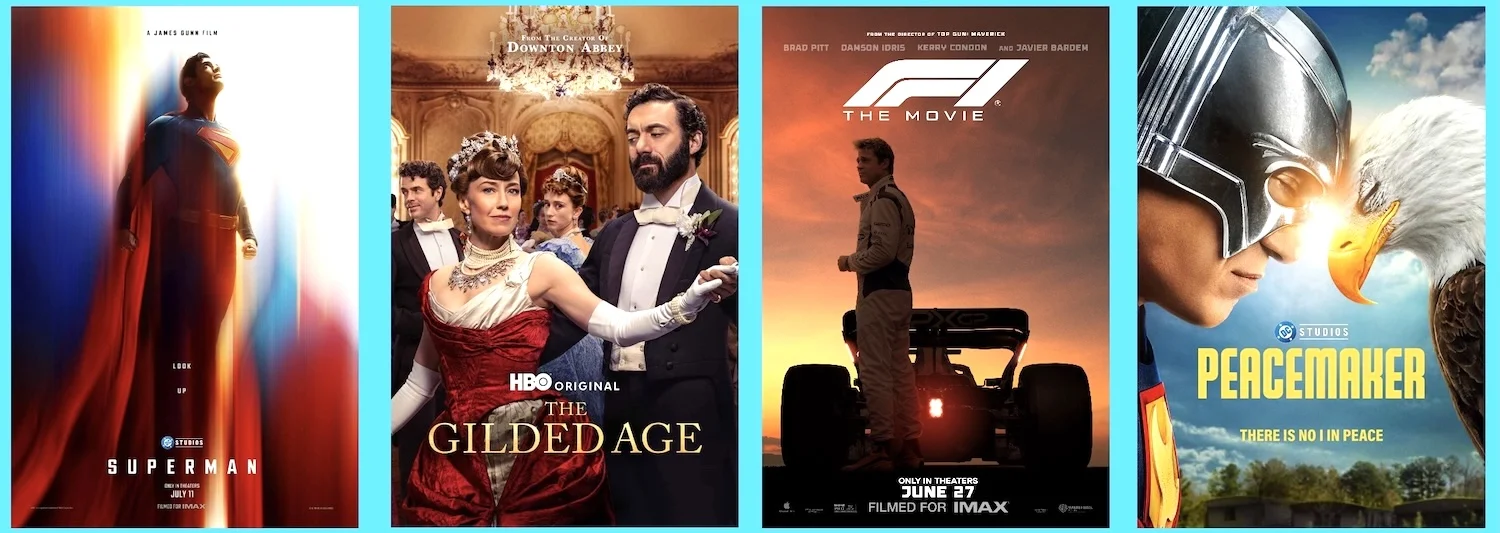
Headquarters: New York, USA
Revenue: $38.4 billion
Core Rivalry: Film studios; Max vs. Disney+; Franchises (DC vs. Marvel)
Competitive Edge: Massive content library, Strong franchise depth
Warner Bros. Discovery (WBD) was formed through the merger of WarnerMedia (previously owned by AT&T) and Discovery, Inc. The idea was to combine WarnerMedia’s premium entertainment, scripted content, news, and sports assets with Discovery’s strengths in unscripted, lifestyle, and global cable networks, as well as its international footprint.
Unlike Disney, which leans heavily on family-oriented IP, WBD covers a wider demographic spectrum (from adult dramas to global reality hits). Its library of over 145,000 hours of content makes it one of the richest archives in the entertainment industry.
In the streaming world, the company operates Max (formerly HBO Max), a premium platform combining HBO’s prestige storytelling with Discovery’s reality and factual content. As of 2025, it had had over 125.7 million global subscribers. [16]
Since the merger, WBD has focused on integrating its assets, reducing its heavy debt, and adapting to changing consumer trends, such as the rise of streaming and the decline of traditional cable. In FY 2025, the company reported a gross profit of $16.6 billion and a long-term debt of $34.4 billion.
Read More
Sources Cited and Additional References- Media, Number of Disney Plus subscribers worldwide, Statista
- Financials, Disney’s revenue throughout the years, Macrotrends
- Global Attractions Attendance Report, Most visited theme park, Guinness World Records
- Annual Report, Financial statement and strategic report, Merlin Entertainments
- Megan Garside, Dreamworks is fighting AI, Gamesradar
- Media, Highest-grossing Illumination animated movies worldwide, Statista
- Report, Consolidated balance sheets and annual presentation, Lionsgate
- Scharon Harding. Apple loses $1B a year on prestigious, minimally viewed Apple TV+, Arstechnica
- Jackson Weaver, Rings of Power could cost $1 billion, CBC
- Paul Richter, Sony pays $3.4 billion for Columbia Pictures, LA Times
- Press Releases, Tubi achieves record audience scale and engagement, TubiTV
- Fox Corporation, Q4 and FY 2025 results, PRNewswire
- Deborah Mary Sophia, Paramount closes $8 billion merger with Skydance, Reuters
- Financials, Comcast’s net income throughout the years, Macrotrends
- Todd Spangler, Netflix content spending reaches $18 billion in 2025, Variety
- Dominic Preston, HBO Max picked up 3.4 million new subscribers, TheVerge


